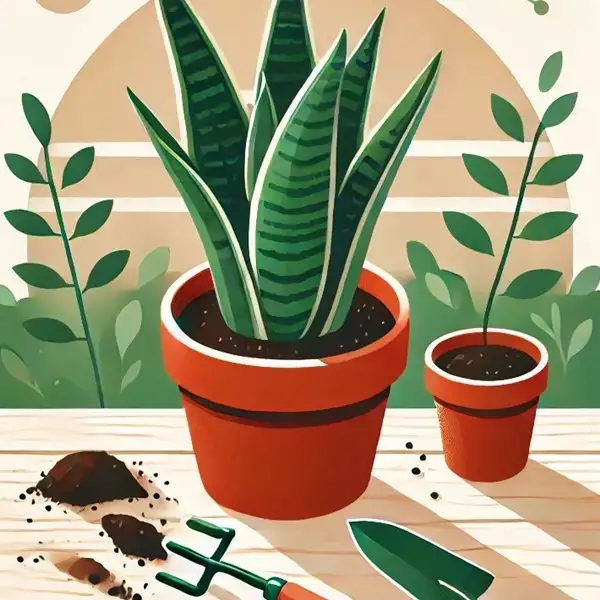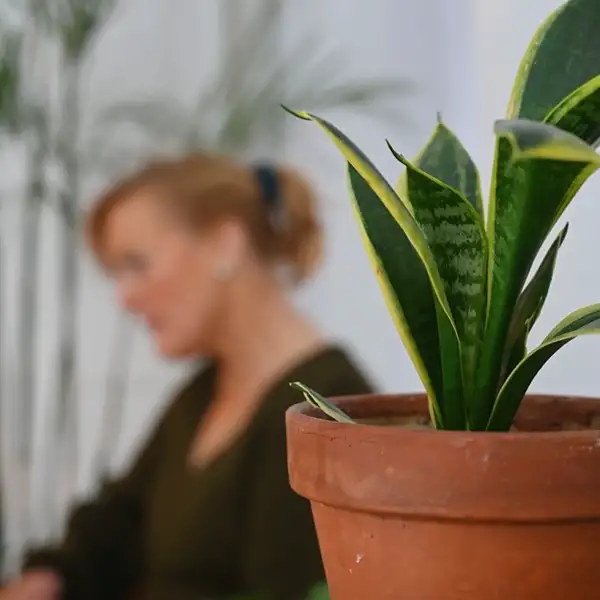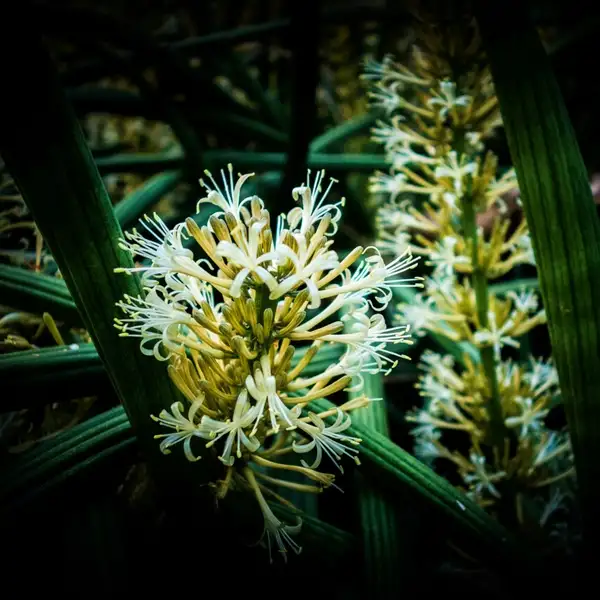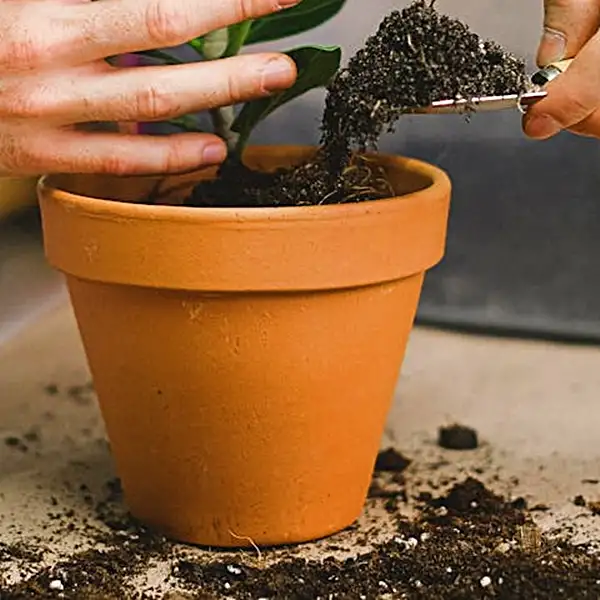Key Takeaways
| Key Takeaways | Why It Matters |
|---|---|
| How to Know When It’s Time | When to repot a Snake plant? Identify the subtle but important signs that indicate repotting is needed. |
| Perfect Timing for Repotting | Timing can make all the difference—discover the best season for a smooth transition. |
| Essential Tools You’ll Need | Avoid mistakes by having the right tools and materials ready before you begin. |
| The Right Way to Repot | Follow a step-by-step approach to ensure a healthy and thriving snake plant. |
| Post-Repotting Care | Learn how to help your plant adjust to its new home and grow successfully. |
| Solving Common Problems | Discover how to handle common issues like root rot, weak plants, and transplant shock. |
Life Cycle of a Snake Plant
In childhood, I helped my mom care for and manage our beautiful houseplants. During different seasons, we repotted our indoor plants for various reasons. I learned back then that repotting a snake plant is an essential part of its care, though it’s often misunderstood. I would always ask my mother, whenever we needed to repot snake plants,
“How do you know when to repot a snake plant?”
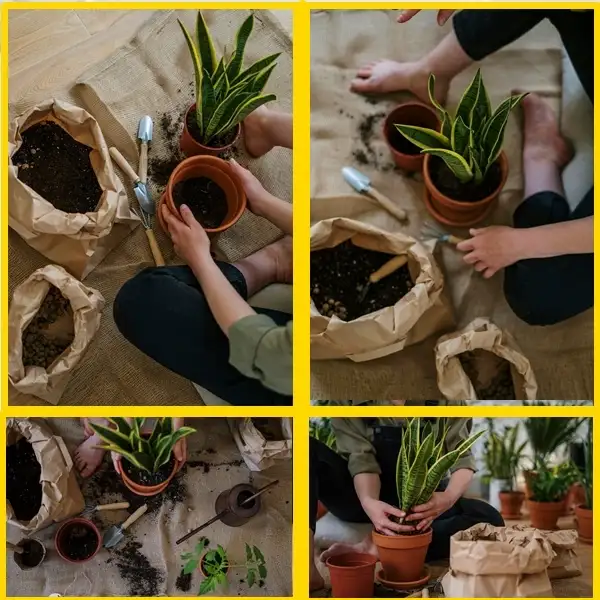
She shared many tips from traditional gardening practices. I always preferred the easiest methods, so today, I’ll share expert advice on when to repot a snake plant, along with valuable insights into snake plant care.
Snake plants scientifically known as Sansevieria or Dracaena Trifasciata are celebrated houseplants for their inherent resilience & striking aesthetics. Originating from tropical West Africa isthmus, these floor-cherishing succulents experience a relatively slow life cycle divided into growing and inactive seasons like most plants.

Initially, snake plants sprout new leaves while maturing through their growth phase typically in spring and summer. It is a period characterized by considerable foliage development during which your snake plant accepts nutrients readily whilst going through critical metabolic activities immensely.
In contrast to its active season, the snake plant transitions into their dormant phase predominantly in winter months; during this period they naturally conserve energy for survival rather than diverting it to ornamental growth.
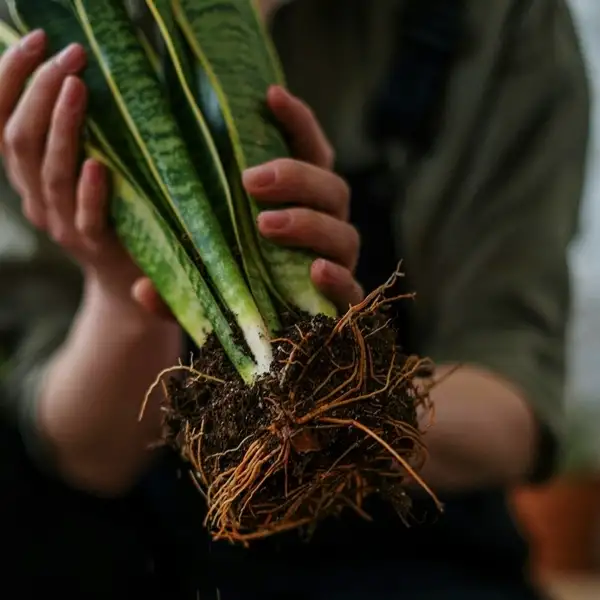
5 Signs That Snake Plant Needs Repotting
Snake plants hold the distinct virtue of thriving even in somewhat neglectful conditions; hence, discerning when to repot snake plants may be challenging for budding gardeners indeed!
| Sign | Description |
|---|---|
| Roots Emerging from Drainage Holes/Overcrowded Base | When roots start peeking out from the bottom, it’s a clear indication that your snake plant has outgrown its current pot & needs more space |
| Soil Drains Too Quickly | If water passes through the soil rapidly, it suggests that the root system is occupying too much space, leaving insufficient soil to retain moisture |
| Top-Heavy or Leaning Plant | A plant that frequently tips over indicates that the pot is too small to support its size, necessitating repotting into a more stable container |
| Cracked or Bulging Pot | Roots expanding forcefully can cause the pot to crack or bulge, signaling the need for a larger home for your plant |
| Stunted Growth | If your snake plant’s growth has slowed or stopped, it may be due to root overcrowding, limiting its ability to access nutrients & water |
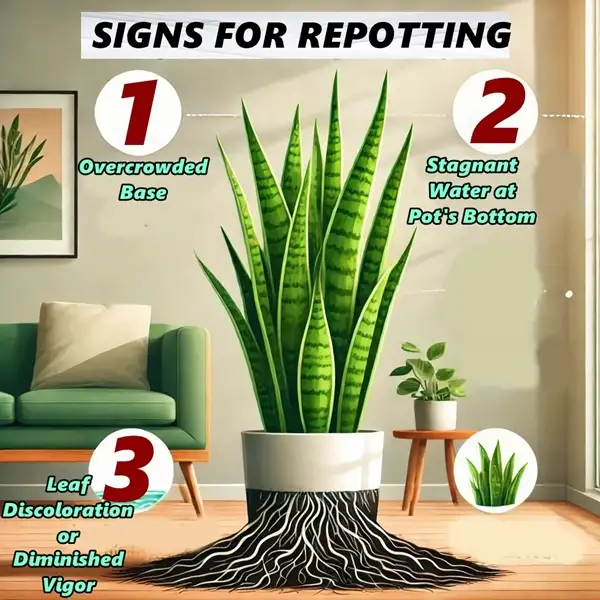
Best Time For Repotting Snake Plants
Although there isn’t any explicit month set aside marking perfect timings regarding repottings mother-in-law’s tongue c/o Horticultural maestros globally endorse late winter & early spring as the exemplary duration stretching from February till April endorsing efficient transplantation. This timing helps provide favorable weather conditions, which assist in reducing transplant shock.
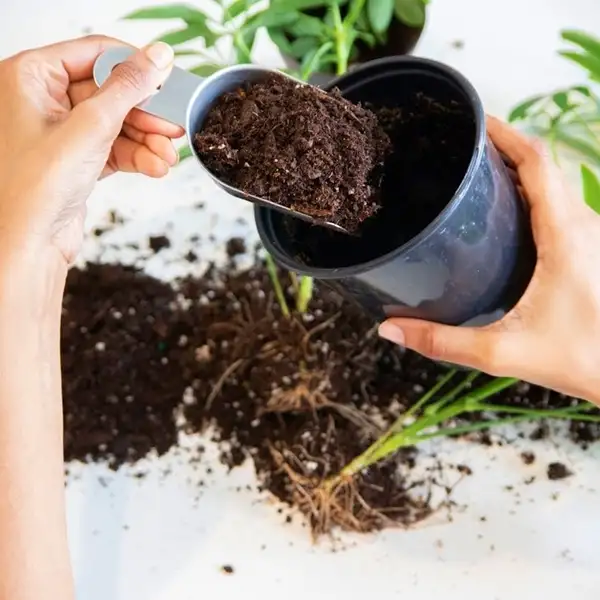
Potentially concurring with the snake plant’s natural growth cycle, fresh starts typically permit roots adequate time to situate and establish themselves anew before propelling into vigorous summertime blooming.
Ensure your plants are not stressed out or wilting due to pest infections, extreme weather spells, or diseases which further magnify transplanting shock risks.
6 Tools & Materials for Repotting Sansevieria
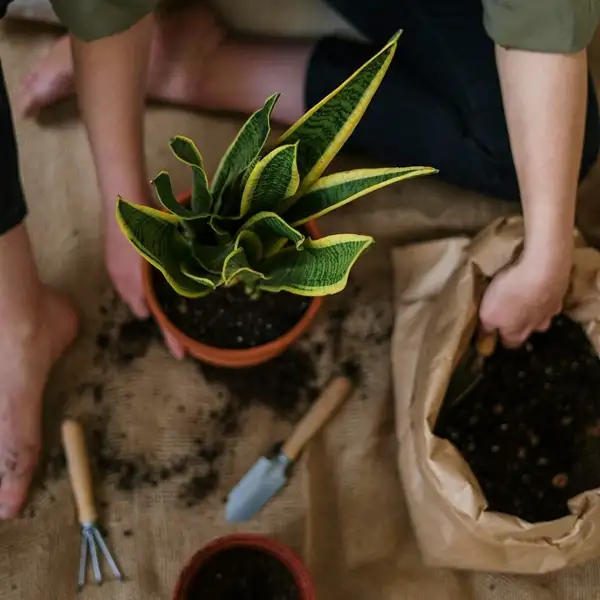
A variety of essential tools can streamline repotting sansevieria processes when armed with them aptly such as –
| Tool/Material | Purpose |
|---|---|
| New Pot with Drainage Holes |
|
| Well-Draining Potting Mix |
|
| Clean, Sharp Scissors or Pruning Shears |
|
| Gardening Gloves |
|
| Watering Can |
|
| Slow-Release Fertilizer |
|
How to Repot a Snake Plant (Step-by-Step Guide)
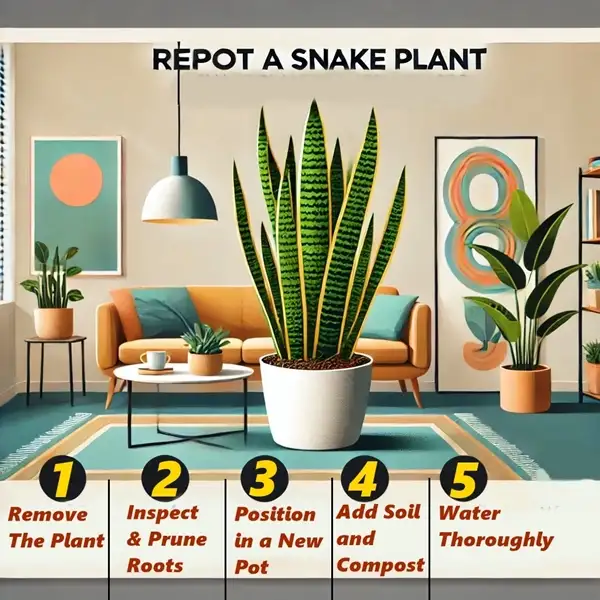
-
Carefully Remove the Plant – First, delicately extract the snake plant from its current dwelling taking care not to damage any roots.
- Inspect and Prune Roots – Secondly, upon successful eviction, inspect root health meticulously pruning away any disease-stricken signs visible prominently affecting plant’s health.
- Position in a New Pot – Position it into new larger pots now followed by adding earlier prepared soil reaching approximately halfway whilst ensuring central placements lest you provoke future tilts inevitably.
- Add Soil and Compost – Gradually cover it with more compost leaving about an inch gap from the rim facilitating convenient watering routines hereon.
- Water Thoroughly – Lastly, water it cautiously until you foresee water draining effectively symbolizing completed tasks successfully.
How To Care For Repotted Snake Plant
Post-repotting, snake plants require additional pampering for at least the next few weeks, until they adjust to their updated environment comfortably.
- Encourage recovery primarily through decreased sunlight exposure,
- preventing unnecessary stresses during this delicate phase,
- and supplementing it by avoiding overwatering mistakes as well.
- Once acclimatized, gradually return them to their preferred lighting setups while maintaining balanced watering patterns based on individual observations over time, being perceptive to their specific needs.
- Utilize slow-release fertilizers to encourage beneficial nutrient infusions, supporting recovery and further promoting growth abundantly.
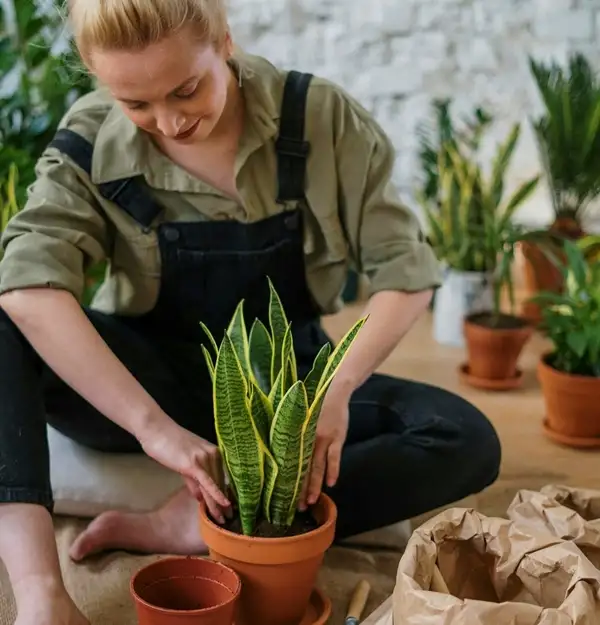
Dr. Craig Miller from Cornell University’s School of Horticulture suggests –
‘The beautiful thing about Snake plants is that they are incredibly hardy & easy to care for, making them a perfect plant for both seasoned gardeners & beginners.’
Frequently Asked Questions
Why does my snake plant has brown spots?
Brown spots indicate overwatering, poor drainage or fungus. Adjust watering, improve airflow & trim affected leaves. Use fungicide if needed.
How to repot a snake plant with root rot?
Remove the plant, trim rotted roots & repot in dry, fresh soil. Water sparingly & ensure good drainage.
Why is my snake plant falling over after repotting?
Your plant may be in shock or loosely planted. Firm the soil, avoid overwatering & give it time to adjust.
What is the best way to repot a snake plant?
Gently remove plant, trim damaged roots & repot in a slightly larger pot with succulent-friendly soil. Water lightly.
How do I increase the size of my snake plant?
Provide bright & indirect light, occasional watering & well-draining soil. Fertilize in spring/summer & remove unhealthy leaves.
Should I repot my snake plant after buying?
Repot if root-bound or in poor soil. Otherwise wait until next growing season.
How to replant a snake plant leaf?
Cut a healthy leaf into sections, let them dry & plant upright in well-draining soil. Water lightly until new growth appears.
When should I separate my snake plants?
Separate when roots are densely packed or pups crowd pot. Spring is best time for division.
Do snake plants like to be crowded?
They prefer snug spaces but may need repotting if overcrowded.
Do snake plants need big pots?
Use a pot only slightly larger than root ball. A too big pot can cause water retention.
Which is the best soil for snake plant repotting?
Use well-draining, loamy soil - mix garden soil, coarse sand & peat moss for best results.


